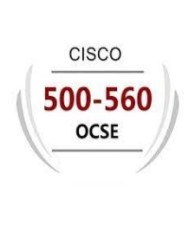As the automotive industry transitions toward an electric future, automakers face the dual challenge of safeguarding innovation while managing increasing exposure to cyberthreats. With the adoption of electric vehicles (EVs) and the integration of IoT and operational technology (OT) devices in manufacturing environments, the attack surface has expanded dramatically. In the race for digital transformation, automakers must ask: how can they bolster their security posture, reduce complexity, and realize quick time-to-value with new solutions—especially in their manufacturing environments?Industry 4.0 and the Rise of CyberthreatsThe advent of Industry 4.0 has revolutionized automotive manufacturing, with IoT and OT devices transforming production lines through connectivity and automation. However, this shift comes with a significant caveat: an expanded attack surface. According to Boston Consulting Group, the integration of IoT and OT devices has increased the attack surface by 60%,¹ cementing the need for comprehensive security solutions.The numbers further illuminate this growing risk:The number of interconnected devices in automotive manufacturing has tripled in the past four years, increasing potential access points for cybercriminals.²Cyberattacks targeting OT systems in the automotive sector have surged by 400% over the past three years.³These statistics reveal a harsh reality: traditional security approaches may not be able to safeguard innovation and keep pace with the rapidly increasing complexity of modern automotive manufacturing systems.Reducing Unplanned Downtime: Why IoT Protection MattersUnplanned downtime in automotive manufacturing can lead to significant financial and reputational damage. With global supply chains operating at unprecedented speeds, any disruption could delay production schedules, increase costs, and weaken competitive positioning.Securing IoT devices is the first step to ensuring continuous operation. IoT-enabled predictive maintenance can reduce unplanned downtime by up to 55% and extend machinery lifespan by 25–45%.⁴ By leveraging secure and reliable IoT data, automakers can minimize unexpected equipment failures and maintain uptime while driving efficiency. Accenture research suggests that secure IoT data can reduce unexpected equipment failures by an impressive 35–55%.⁵ In essence, robust security empowers predictive maintenance and operational resilience.Mitigating Complexity Through Zero Trust Access ControlAutomakers must optimize performance and strengthen OT security to reduce risks, improve system reliability, and maintain production schedules. Traditional VPN-based approaches expose networks to unnecessary risks by granting over-privileged access to users and contractors. This model creates an environment where attackers can exploit vulnerabilities and identities and move laterally through the network, compromising mission-critical systems and stealing critical data.Enter zero trust architecture, a transformative approach to security that aligns seamlessly with the demands of automotive manufacturing.Zscaler Private Access: Shrinking the Attack SurfaceZscaler Private AccessTM (ZPATM) eliminates the risks associated with traditional network-level access by employing a zero trust network access (ZTNA) model. With ZPA, users only connect to the specific applications they are authorized to access—without being placed on the broader corporate or OT networks. This approach has key benefits:Direct and secure connectivity: ZPA dynamically establishes secure, direct connections between users and applications, minimizing exposure points and strengthening security posture.Invisibility of applications: Applications are never exposed to the internet, reducing the risk of exploitation. Unauthorized users, including attackers, cannot even detect the applications’ existence.Prevention of lateral movement: Attackers can no longer move laterally across the network since users cannot access unnecessary resources.By reducing the attack surface and providing a scalable, quick-to-deploy solution, ZPA helps automakers realize immediate value by reducing risk within their complex manufacturing environments.Zscaler Privileged Remote Access: Least-Privileged Security for ContractorsManaging third-party and contractor access is a critical challenge for automakers, particularly in OT environments. Zscaler Privileged Remote Access (PRA) offers a zero trust-based solution for providing secure, identity-focused access to contractors, without the need to install client software. This solution supports SSH, RDP, and VNC access to OT systems all through a standard web browser. Key benefits include:Least-privileged access: Contractors are granted access only to the specific resources they need, ensuring no unnecessary exposure.No traditional VPNs: PRA eliminates the need for VPNs, which reduces the risk of network-wide exposure where a curious contractor pokes around looking for interesting data and poses an insider risk.Enhanced monitoring: PRA meticulously tracks contractor activity, including session recording, ensuring compliance and reinforcing secure access policies.By enforcing granular, identity-based access without exposing the network, PRA addresses a prominent weak point in automakers’ traditional security strategies: contractors being overprovisioned access.Driving Innovation While Reducing RiskAs automakers continue to pioneer EVs and optimize their manufacturing systems, it’s also clear that attackers are optimizing and innovating their practice. Cybersecurity is not an optional vehicle feature, but a required safety imperative for digital transformation strategies. Beyond protecting sensitive systems, a robust security posture minimizes downtime, reduces operational risks, and ensures a smooth path toward innovation.Combining zero trust principles with predictive maintenance models, automakers can balance cybersecurity with operational efficiency. By adopting solutions like Zscaler Private Access and Zscaler Privileged Remote Access, manufacturers are empowered to:Minimize downtime: Proactively maintain production schedules through secure IoT and OT environments.Optimize performance: Safeguard critical systems while enabling extraordinary operational agility.Reduce complexity: Simplify compliance and security in a dynamic, interconnected environment.The path toward an all-electric, highly connected future awaits. By prioritizing security, automakers can accelerate their vision while confidently navigating the challenges of today’s evolving threat landscape. 1. The Future of Manufacturing: Industry 4.0, Boston Consulting Group, 2025.2. The Connected Factory: Opportunities and Risks, Forrester, 2024.3. Cybersecurity in the Automotive Industry, KPMG, 2024.4. Mitigating Operational Risks in Automotive Manufacturing, McKinsey & Company, 2024.5. Predictive Maintenance in Automotive Manufacturing, Accenture, 2025.
[#item_full_content] As the automotive industry transitions toward an electric future, automakers face the dual challenge of safeguarding innovation while managing increasing exposure to cyberthreats. With the adoption of electric vehicles (EVs) and the integration of IoT and operational technology (OT) devices in manufacturing environments, the attack surface has expanded dramatically. In the race for digital transformation, automakers must ask: how can they bolster their security posture, reduce complexity, and realize quick time-to-value with new solutions—especially in their manufacturing environments?Industry 4.0 and the Rise of CyberthreatsThe advent of Industry 4.0 has revolutionized automotive manufacturing, with IoT and OT devices transforming production lines through connectivity and automation. However, this shift comes with a significant caveat: an expanded attack surface. According to Boston Consulting Group, the integration of IoT and OT devices has increased the attack surface by 60%,¹ cementing the need for comprehensive security solutions.The numbers further illuminate this growing risk:The number of interconnected devices in automotive manufacturing has tripled in the past four years, increasing potential access points for cybercriminals.²Cyberattacks targeting OT systems in the automotive sector have surged by 400% over the past three years.³These statistics reveal a harsh reality: traditional security approaches may not be able to safeguard innovation and keep pace with the rapidly increasing complexity of modern automotive manufacturing systems.Reducing Unplanned Downtime: Why IoT Protection MattersUnplanned downtime in automotive manufacturing can lead to significant financial and reputational damage. With global supply chains operating at unprecedented speeds, any disruption could delay production schedules, increase costs, and weaken competitive positioning.Securing IoT devices is the first step to ensuring continuous operation. IoT-enabled predictive maintenance can reduce unplanned downtime by up to 55% and extend machinery lifespan by 25–45%.⁴ By leveraging secure and reliable IoT data, automakers can minimize unexpected equipment failures and maintain uptime while driving efficiency. Accenture research suggests that secure IoT data can reduce unexpected equipment failures by an impressive 35–55%.⁵ In essence, robust security empowers predictive maintenance and operational resilience.Mitigating Complexity Through Zero Trust Access ControlAutomakers must optimize performance and strengthen OT security to reduce risks, improve system reliability, and maintain production schedules. Traditional VPN-based approaches expose networks to unnecessary risks by granting over-privileged access to users and contractors. This model creates an environment where attackers can exploit vulnerabilities and identities and move laterally through the network, compromising mission-critical systems and stealing critical data.Enter zero trust architecture, a transformative approach to security that aligns seamlessly with the demands of automotive manufacturing.Zscaler Private Access: Shrinking the Attack SurfaceZscaler Private AccessTM (ZPATM) eliminates the risks associated with traditional network-level access by employing a zero trust network access (ZTNA) model. With ZPA, users only connect to the specific applications they are authorized to access—without being placed on the broader corporate or OT networks. This approach has key benefits:Direct and secure connectivity: ZPA dynamically establishes secure, direct connections between users and applications, minimizing exposure points and strengthening security posture.Invisibility of applications: Applications are never exposed to the internet, reducing the risk of exploitation. Unauthorized users, including attackers, cannot even detect the applications’ existence.Prevention of lateral movement: Attackers can no longer move laterally across the network since users cannot access unnecessary resources.By reducing the attack surface and providing a scalable, quick-to-deploy solution, ZPA helps automakers realize immediate value by reducing risk within their complex manufacturing environments.Zscaler Privileged Remote Access: Least-Privileged Security for ContractorsManaging third-party and contractor access is a critical challenge for automakers, particularly in OT environments. Zscaler Privileged Remote Access (PRA) offers a zero trust-based solution for providing secure, identity-focused access to contractors, without the need to install client software. This solution supports SSH, RDP, and VNC access to OT systems all through a standard web browser. Key benefits include:Least-privileged access: Contractors are granted access only to the specific resources they need, ensuring no unnecessary exposure.No traditional VPNs: PRA eliminates the need for VPNs, which reduces the risk of network-wide exposure where a curious contractor pokes around looking for interesting data and poses an insider risk.Enhanced monitoring: PRA meticulously tracks contractor activity, including session recording, ensuring compliance and reinforcing secure access policies.By enforcing granular, identity-based access without exposing the network, PRA addresses a prominent weak point in automakers’ traditional security strategies: contractors being overprovisioned access.Driving Innovation While Reducing RiskAs automakers continue to pioneer EVs and optimize their manufacturing systems, it’s also clear that attackers are optimizing and innovating their practice. Cybersecurity is not an optional vehicle feature, but a required safety imperative for digital transformation strategies. Beyond protecting sensitive systems, a robust security posture minimizes downtime, reduces operational risks, and ensures a smooth path toward innovation.Combining zero trust principles with predictive maintenance models, automakers can balance cybersecurity with operational efficiency. By adopting solutions like Zscaler Private Access and Zscaler Privileged Remote Access, manufacturers are empowered to:Minimize downtime: Proactively maintain production schedules through secure IoT and OT environments.Optimize performance: Safeguard critical systems while enabling extraordinary operational agility.Reduce complexity: Simplify compliance and security in a dynamic, interconnected environment.The path toward an all-electric, highly connected future awaits. By prioritizing security, automakers can accelerate their vision while confidently navigating the challenges of today’s evolving threat landscape. 1. The Future of Manufacturing: Industry 4.0, Boston Consulting Group, 2025.2. The Connected Factory: Opportunities and Risks, Forrester, 2024.3. Cybersecurity in the Automotive Industry, KPMG, 2024.4. Mitigating Operational Risks in Automotive Manufacturing, McKinsey & Company, 2024.5. Predictive Maintenance in Automotive Manufacturing, Accenture, 2025.










